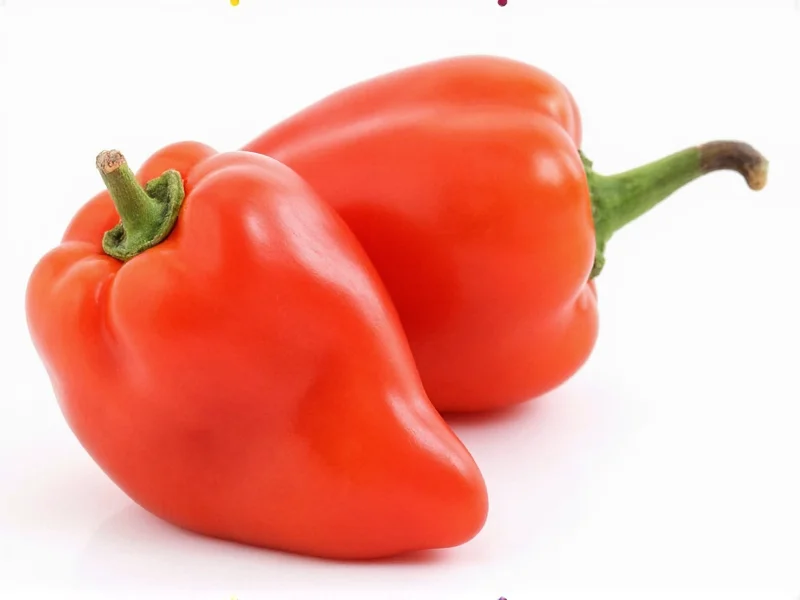Understanding the precise heat level of habanero peppers requires examining the Scoville scale, which measures capsaicin concentration—the compound responsible for a pepper's burn. Developed by pharmacist Wilbur Scoville in 1912, this scale quantifies heat intensity through dilution testing. The higher the Scoville rating, the more capsaicin present and the hotter the pepper.
Habanero Pepper Heat Range Explained
Habaneros consistently rank as one of the hottest peppers commonly available to consumers. While their standard range spans 100,000-350,000 SHU, several factors influence where an individual habanero falls within this spectrum:
- Growing conditions: Soil composition, climate, and water stress significantly impact capsaicin production
- Ripeness: Fully mature red or orange habaneros generally pack more heat than greener counterparts
- Genetic variation: Different habanero cultivars naturally produce varying heat levels
- Plant position: Peppers growing on outer branches often develop higher capsaicin concentrations
| Pepper Variety | Scoville Heat Units (SHU) | Heat Comparison |
|---|---|---|
| Bell Pepper | 0 SHU | Mild, no heat |
| Jalapeño | 2,500-8,000 SHU | 5-40x milder than habanero |
| Serrano | 10,000-23,000 SHU | 4-35x milder than habanero |
| Habanero | 100,000-350,000 SHU | Reference point |
| Ghost Pepper | 855,000-1,041,427 SHU | 2.4-10x hotter than habanero |
| Carolina Reaper | 1,400,000-2,200,000 SHU | 4-22x hotter than habanero |
Common Habanero Varieties and Their Heat Differences
Not all habaneros deliver identical heat experiences. Different cultivars exhibit distinct Scoville ratings:
- Orange Habanero: The classic variety typically measuring 100,000-350,000 SHU with tropical fruit notes
- Red Savina Habanero: Once recognized as the world's hottest pepper (up to 577,000 SHU), though this specific cultivar is now rare
- Chocolate Habanero: Dark brown variety ranging 425,000-475,000 SHU with smoky, earthy flavor
- White Habanero: Generally milder at 100,000-300,000 SHU with citrus undertones
- Scottish Bonnet: Often confused with habaneros, these Caribbean peppers range 100,000-350,000 SHU with slightly different flavor profile
Why Habanero Heat Varies So Dramatically
The substantial range in habanero Scoville units stems from multiple biological and environmental factors. Capsaicin production serves as the plant's natural defense mechanism against predators. When habanero plants experience stress—whether from inconsistent watering, nutrient deficiencies, or temperature fluctuations—they often produce more capsaicin as a protective response.
Interestingly, the heat isn't evenly distributed throughout the pepper. The placenta (white ribs inside the pepper) contains the highest concentration of capsaicin, while the flesh and seeds contain progressively less. This explains why removing the inner ribs significantly reduces a habanero's perceived heat when cooking.
Safe Handling Practices for Habanero Peppers
Working with habaneros requires proper precautions due to their substantial capsaicin content. Consider these safety measures:
- Always wear food-safe gloves when handling habaneros to prevent skin irritation
- Avoid touching your face, especially eyes, during and after handling
- Use separate cutting boards and utensils for hot peppers
- Wash hands thoroughly with soap and water after handling, even when wearing gloves
- Consider using eye protection when processing large quantities
- If skin exposure occurs, use milk or oil-based products to neutralize the burn (water spreads capsaicin)
Culinary Applications of Habanero Peppers
Despite their intense heat, habaneros offer complex flavor profiles that make them valuable in culinary applications. Their distinctive citrusy, floral notes with tropical fruit undertones can elevate salsas, hot sauces, marinades, and Caribbean dishes when used judiciously. Chefs often recommend starting with small amounts—¼ to ½ teaspoon of minced habanero per dish—and adjusting to taste.
For those seeking habanero flavor without overwhelming heat, roasting or boiling habaneros before use can reduce their Scoville rating while preserving much of their distinctive flavor. Alternatively, removing the seeds and inner membranes significantly decreases heat intensity while maintaining characteristic taste.











 浙公网安备
33010002000092号
浙公网安备
33010002000092号 浙B2-20120091-4
浙B2-20120091-4